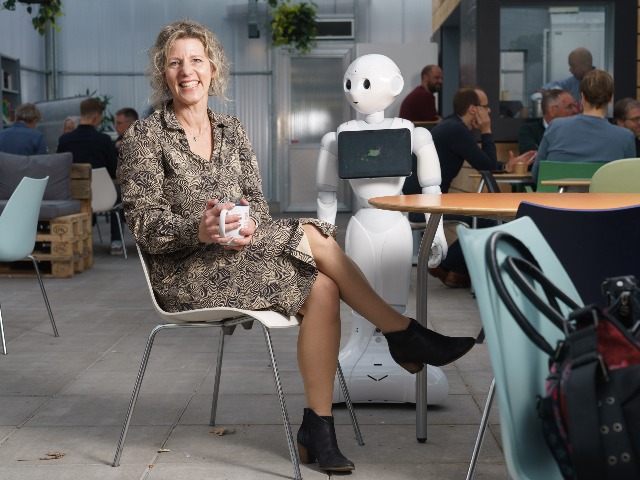Human-robot service teams and power dynamics in healthcare

It is predicted that within the next decade, around a third of current full-time occupations will be transformed into augmented services delivered by teams of humans and machines – and we already see this transition now, given that many of us are nowadays co-working with AI such as Chat GPT. Given the inevitable rise of human-robot teams, it is imperative to investigate how both the human client and the human co-worker can embrace human-robot teams, called cobotic teams. This is what Jenny van Doorn, Professor of Services Marketing, has set out to do in much of her research. An article on the unintended consequences of human-robot collaboration in healthcare services, that Van Doorn co-authored, was recently published in the Journal of the Academy of Marketing Science.
In prior research, Van Doorn found that people do not like to be served by robots. “Yet, the more I went in the field to study “robots in the wild”, the more I realized that the question is not whether robots will replace human employees – as we approached it in previous papers – but more how humans and robots will work together. Service environments, in particular in health care where I do a lot of my work in, are very complex, meaning that humans and robots are likely to divide tasks, working side-by-side in teams.”
Human leader
In their study, Van Doorn and her co-authors Ilana Shanks, Maura L. Scott, Martin Mende and Dhruv Grewal found that instead of interacting with a human and a robot, people rather interact with one human employee. Van Doorn was surprised that people prefer a human employee alone to a human with a robot. “I expected people to be okay with, or perhaps even to like, the addition of the robot, as the human employee is still there. You would say two employees are better than one, but if one of the two is a robot, that is clearly not the case.” Putting the robot in the lead in human-robot teams made things even worse. Van Doorn: “The reason for this is that consumers ascribe less power to robot (versus human) team leaders and feel more anxiety. So it is important to that the human is clearly the team leader in a cobotic team.”
Finding optimal working arrangements
Van Doorn and co-authors also discovered that being able to choose the robot in the service team or stressing the robot’s performance capabilities can help people accept human-robot collaboration in healthcare services. This acceptance is crucial. With an ageing population and an alarming shortage of health care personnel, the rising demand for health care is possibly one of the most urgent challenges of our time. Care robots can help solve these personnel shortages, and therefore, many health care institutions are looking for ways to optimally integrate and use robots in their daily practices. In other sectors, staff shortages are also pressing, or will become pressing in the future. Given that we all need to start working with some type of technology, finding optimal working arrangements is very important. Van Doorn: “While in our study, we looked at embodied robots, our main implications likely also hold true for other types of technology, such as AI or algorithms. Our research highlights that it is important to make sure to position these technologies as a tool, as an assistant, as support – with the human in the lead.”
Van Doorn plans to continue studying the optimal working arrangements in human-robot teams. “It is important to not only take into account the perspective of the person that is being served, but also that of the employees. Apart from keeping the client/customer happy, we also need to appease the employees. What fascinates me is that in some cases, workers already accept AI as a “boss” – for instance, Uber drivers and grocery deliverers are often managed by algorithms. But for robots this acceptance is not yet the case, we rather find the opposite. So the main question is under what circumstances are AI bosses okay, and when are they not?”
For more information, please contact Jenny van Doorn.
Reference:
Shanks, I., Scott, M.L., Mende, M. et al. Cobotic service teams and power dynamics: Understanding and mitigating unintended consequences of human-robot collaboration in healthcare services. J. of the Acad. Mark. Sci. (2024). https://doi.org/10.1007/s11747-024-01004-1


